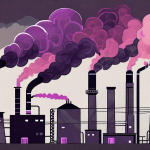Asbestos, once praised for its durability and resistance, hides a lethal reality. This article uncovers the risks associated with asbestos exposure, linking it directly to various cancers, including lung cancer and mesothelioma. Tracing asbestos from ancient uses to industrial acclaim, the narrative shifts to its dark legacy as a carcinogen, capable of inflicting long-term health devastation. Highlighting the invisible threat it poses, especially in older buildings undergoing renovation, the text emphasizes the need for heightened awareness and strict adherence to safety measures. By detailing the diseases asbestos can spawn and identifying high-risk occupations, it calls for vigilance in managing exposure. Regulatory efforts aimed at curbing asbestos use underscore a global recognition of its dangers. Practical guidance for minimizing risk—through professional asbestos removal, protective gear, and regulatory compliance—provides a roadmap for safeguarding health. This compelling exploration of asbestos underscores the importance of informed action to mitigate its insidious threat to public health.
Asbestos, a seemingly harmless mineral, may be hiding an insidious danger that many are unaware of. It is crucial to understand the risks associated with asbestos exposure and its connection to cancer. This article aims to unravel the mysteries surrounding asbestos and shed light on its potential devastating consequences.
Unveiling the Risk: What is Asbestos and How is it Harmful
Asbestos is a naturally occurring fibrous mineral that was once highly regarded for its resistance to heat, electricity, and chemical damage. It was commonly used in building materials, such as insulation, roofing, and flooring. However, the story of asbestos goes beyond its practical applications.
Let’s delve deeper into the fascinating history of this mineral. Asbestos has been used for thousands of years, with evidence of its use dating back to ancient civilizations. The Greeks, Romans, and Egyptians all recognized its unique properties and utilized it in various ways. From clothing to pottery, asbestos was woven into the fabric of their societies.
Fast forward to the industrial revolution, and asbestos found its way into the modern world. Its fire-resistant properties made it an ideal material for insulation, protecting buildings and machinery from the devastating effects of flames. Asbestos became a staple in the construction industry, with its versatility and affordability making it a popular choice. However, as time went on, scientists began to uncover the dark side of asbestos. They discovered that microscopic asbestos fibers, when released into the air, could be inhaled or ingested by humans. These fibers, once inside the body, could cause serious harm.
Imagine a scenario where an old building is being renovated. The workers, unaware of the hidden danger, start tearing down walls and ceilings. As they break through the materials containing asbestos, tiny fibers are released into the air, forming an invisible cloud of danger. Anyone present in the vicinity is at risk of inhaling these hazardous particles.
Once inside the body, these microscopic fibers can wreak havoc. They can lodge themselves in the delicate tissues of the lungs, abdomen, or other organs, causing long-term damage. Over time, the accumulation of asbestos fibers can lead to a range of health issues, some of which are life-threatening.
Lung cancer, one of the most well-known consequences of asbestos exposure, can develop years or even decades after the initial exposure. The tiny fibers irritate the lung tissue, leading to the formation of cancerous cells. Mesothelioma, a rare and aggressive cancer that affects the lining of the lungs, heart, or abdomen, is also strongly linked to asbestos exposure.
But the dangers don’t stop there. Asbestosis, a chronic respiratory condition, can also develop as a result of asbestos exposure. The fibers cause scarring and inflammation in the lungs, making it increasingly difficult for the affected individual to breathe. This condition can significantly impact the quality of life and may require ongoing medical treatment.
It is crucial to understand the risks associated with asbestos and take appropriate precautions when dealing with materials that may contain it. Asbestos awareness and proper handling procedures are essential to protect the health and well-being of workers and individuals in the vicinity of asbestos-containing materials. So, the next time you encounter asbestos or hear about its presence, remember the hidden dangers it carries. The story of asbestos is a cautionary tale, reminding us of the importance of knowledge and vigilance in the face of potential harm.
Asbestos and Cancer: Connecting the Dots
The link between asbestos exposure and cancer is undeniable. Studies have shown that prolonged or repeated exposure to asbestos increases the risk of developing various types of cancer. Lung cancer, in particular, is a grave concern for individuals who have encountered asbestos in their daily lives.
When asbestos fibers are inhaled, they can cause inflammation and scarring of lung tissues, leading to the development of cancerous cells. It is essential to recognize the early signs of asbestos-related cancers, such as persistent cough, chest pain, and difficulty breathing, and seek medical attention promptly.
Types of Cancers Linked to Asbestos Exposure
While lung cancer is most commonly associated with asbestos exposure, it is important to note that other types of cancer can also stem from this deadly mineral. Mesothelioma, a rare and aggressive cancer that primarily affects the lining of the lungs and abdomen, is almost exclusively caused by asbestos exposure.
Moreover, asbestos exposure has been linked to cancers of the larynx, ovaries, and gastrointestinal tract. These cancers can pose severe threats to affected individuals, making it crucial to understand the risks and take preventive measures.
High-Risk Occupations and Environments for Asbestos Exposure
Various occupations and environments put individuals at higher risk of asbestos exposure. Workers in industries such as construction, shipbuilding, mining, and manufacturing are more susceptible to encountering asbestos-containing materials.
Furthermore, individuals who live or have lived in older buildings with asbestos-containing materials, or those who work in close proximity to materials with potential asbestos fibers, are also at risk. It is imperative for individuals in these high-risk environments to take the necessary precautions to reduce exposure and protect their health.
Legal and Health Frameworks: Regulation of Asbestos Use
To safeguard public health, regulatory frameworks have been established to regulate the use of asbestos. Many countries have banned or strictly regulated the use of asbestos in building materials and other industries. These measures aim to reduce exposure and prevent further harm to individuals.
It is important to stay informed about the regulations and guidelines governing asbestos use in your area. By adhering to these regulations, you can make informed decisions and contribute to your own safety and well-being.
Protective Measures and Safety Guidelines for Minimizing Risk
While the danger of asbestos exposure may seem daunting, there are steps you can take to minimize your risk. Professionals trained in asbestos removal and remediation should be hired to safely handle the removal of asbestos-containing materials in older buildings.
- Have your home or workplace inspected for the presence of asbestos-containing materials.
- If asbestos materials are detected, it is crucial to seek guidance from professionals experienced in asbestos abatement to plan and execute safe removal.
- Avoid disturbing materials suspected to contain asbestos, such as ceiling tiles, insulation, or old flooring.
- Use caution when working or renovating in older buildings, and wear appropriate personal protective equipment, such as respiratory masks and disposable coveralls.
It is essential to prioritize your health and well-being by taking preventive measures and seeking professional guidance when dealing with asbestos. By understanding the lurking danger asbestos poses and implementing the necessary safety measures, you can protect yourself and your loved ones from the potential risks associated with asbestos exposure and cancer.






